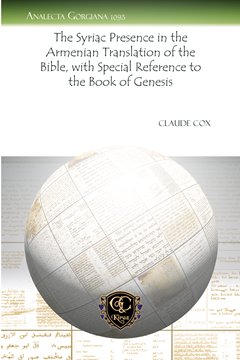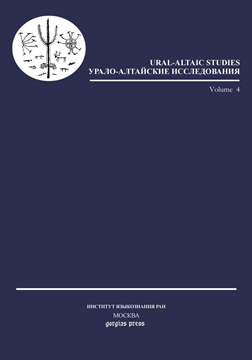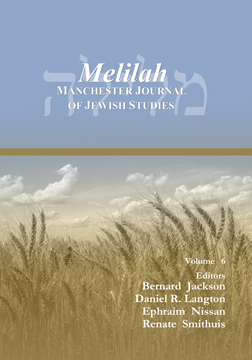The Syriac Presence in the Armenian Translation of the Bible, with Special Reference to the Book of
By Claude Cox
Series: Analecta Gorgiana 1093
ISBN: 978-1-4632-0141-8
Syriac and Armenian Christians interacted regionally and theologically. This paper investigates whether it is thus a viable proposition to deduce Syriac readings from Armenian biblical translations. Cox concludes on a case-basis because extensive use of a similar source text remains questionable.
$36.00 (USD) $21.60 (USD)
Literary Interactions between Syriac and Armenian
Series: Analecta Gorgiana 1094
ISBN: 978-1-4632-0142-5
Thomson surveyed Syriac literary influence on Armenian Christianity from the time of early missionary activity to the middle ages. Evidence suggests that Armenian Christians are greatly indebted to Syriac contributions on sainthood and theology, but less so for historical writing.
$34.00 (USD) $20.40 (USD)
Ural-Altaic Studies 1 (4) 2011
Editor Maria Amelina
Series: Ural-Altaic Studies 4
ISBN: 978-1-4632-0143-2
The journal "Ural-Altaic studies" is concerned with linguistic matters, connected with the Uralic and Altaic languages. It is bilingual; all papers are published in both Russian and English.
$67.00 (USD) $40.20 (USD)
Manchester Journal of Jewish Studies (2009)
ISBN: 978-1-4632-0154-8
Melilah is an interdisciplinary peer-reviewed journal concerned with Jewish law, history, literature, religion, culture and thought in the ancient, medieval and modern eras. Contributors (2009) include Cynthia Crewe (abstract only), Dvir Abramovich, Phillip Mendes, and Elliot Cohen.
$39.00 (USD) $23.40 (USD)
Covenant and Grace in the Old Testament
Assyrian Propaganda and Israelite Faith
ISBN: 978-1-60724-015-0
This book examines the Old Testament language about Israel’s relationship with God in the light of Assyrian royal propaganda. Unpacking this language’s meaning in both Assyrian and biblical contexts, it shows Israel borrowed language from Assyrian vassal treaties to describe its covenant with God, and this book reveals what “covenant” meant, and that it is not “covenant” at all, but “grace.” The broader theological implications of this discovery are explored in dialogue with contemporary theologians. The book takes seriously the study of text in its ancient context in order to highlight the theological content and its modern relevance.
$166.00 (USD) $99.60 (USD)
Journal for Late Antique Religion and Culture
ISBN: 978-1-4632-0147-0
The Journal for Late Antique Religion and Culture (JLARC) is a peer-reviewed free-access online journal edited by members of the Cardiff Centre for Late Antique Religion and Culture (CLARC) and published by Cardiff University (http://www.cardiff.ac.uk/clarc).
$42.00 (USD) $25.20 (USD)





